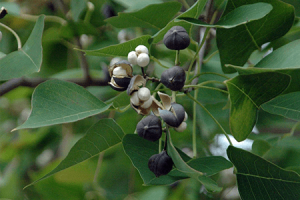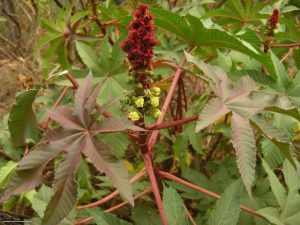Identifying the plants present in your gardens and landscapes is a critical skill. These plants are the sculptors of our local environment. As such, it’s important to understand how they affect local ecology, and what services they may provide. Three overarching categories you’ll find as you delve into plant ID are “native”, “introduced”, and “invasive”. The latter of these is the subject of this post. Invasive is often a misunderstood term but hopefully this will clear up some of that misconception.
Definitions
Before any other conversation can even take place, it’s important to define terms. The first, and most important of these is “Invasive”. Believe it or not, there is an official definition laid out by the USDA under Executive Order 13112. It states, “an alien species whose introduction does or is likely to cause economic or environmental harm or harm to human health.” Alien in this instance being any propagation material of a species not native to a particular ecosystem.
Invasive contrasts with “Native” or “Introduced” species which either naturally occur in an ecosystem or were brought to said system through human activity. Keep in mind that many introduced species have served gardeners very well providing food, beauty, and pollinator support without the risks associated with invasive plants. You can find all these terms defined on the USDA’s website.
What’s the Damage
So why is it important to know these species, and more importantly what can gardeners do about them? The primary issue with these plants is how they impact our natural areas. They compete for real estate crowding out more desirable species. They also deprive these species of resources such as sunlight or nutrients often denying nectar to our pollinators.
Not worried about the impact on natural areas? On an economic front, it costs Florida’s taxpayers roughly $179 million per year to manage invasive species, the majority of which is applied to plant species. This number may seem high, but considering a single invasive insect has cost the citrus industry billions in lost production it seems appropriate.
Economics not persuasive? Some invasive plants such as castor bean (Ricinus communis) are very dangerous for humans. Ingestion of this plant carries a high potential of illness and often results in fatality.
Summing it all up
The bottom line is that invasive plants are not innocuous. The plants we grow in our landscape can and do have detrimental effects on the surrounding environment, the economy, and are potentially deadly to humans. It’s incumbent upon all gardeners to know how to identify these plants. Once you have identified them, it’s important to learn how to eliminate them so they don’t return.
There are many resources out there to help with identification. UF/IFAS has an assessment tool here. This tool allows you to search for individual plants and provides their known status. Another great way to discover the invasive status of your plants, is through the Florida Invasive Species Council or FISC. They are the convergence point between scientists, land managers, and local governments which inform a list of plants with invasive tendencies. That list may be found here.
For more information on controlling invasive species or any other gardening topic, please contact you local UF/IFAS Extension office.
- Consider Chestnuts for Your Landscape - December 26, 2025
- Cold Protection for North Florida - November 6, 2025
- Planning and Planting for Wildlife - October 10, 2025


